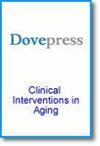Bilirubin Elevation During Hospitalization Post Radiofrequency Catheter Ablation of Persistent Atrial Fibrillation: Variation Trend, Related Factors, and Relevance to 1-Year Recurrence
IF 3.7
3区 医学
引用次数: 0
Abstract
Background: The role of total bilirubin (TBIL) in cardiovascular disease has been increasingly recognized in recent decades. Studies have shown a correlation between total bilirubin levels and the prognosis of patients after heart surgery. This study aimed to investigate the clinical significance of bilirubin elevation in persistent atrial fibrillation (PAF) patients who received radiofrequency catheter ablation (RFCA).Methods and Results: A total of 184 patients with PAF who received RFCA were retrospectively studied. Laboratory examinations and demographic data were analyzed to identify independent predictors of TBIL elevation. The relationship between TBIL and prognosis was further investigated. Our results indicated that TBIL increased significantly after RFCA. Multiple linear regression analysis showed that TBIL elevation owned a negative correlation with the percentile of low voltage areas (LVAs) in left atria (β=− 0.490, P< 0.001). In contrast, a positive correlation was observed with the white blood cell (WBC) ratio (β=0.153, P=0.042) and left atrial diameter (LAD) (β=0.232, P=0.025). It was found that postoperative TBIL levels increased and then gradually decreased to baseline within 5 days without intervention. The bilirubin ratio < 1.211 indicated the possibility of 1-year AF recurrence after ablation with a predictive value of 0.743 (specificity = 75.00%, sensitivity = 66.67%).
Conclusion: Bilirubin elevation post PAF RFCA was a common phenomenon and was associated with 1-year recurrence of AF in PAF patients after RFCA.
持续性心房颤动射频导管消融术后住院期间胆红素升高:变化趋势、相关因素及与 1 年复发的关系
背景:近几十年来,人们越来越认识到总胆红素(TBIL)在心血管疾病中的作用。研究表明,总胆红素水平与心脏手术后患者的预后存在相关性。本研究旨在探讨接受射频导管消融术(RFCA)的持续性心房颤动(PAF)患者胆红素升高的临床意义:对接受射频导管消融术的 184 例 PAF 患者进行了回顾性研究。分析了实验室检查和人口统计学数据,以确定 TBIL 升高的独立预测因素。我们还进一步研究了 TBIL 与预后之间的关系。结果表明,RFCA 后 TBIL 明显升高。多元线性回归分析显示,TBIL 升高与左心房低电压区(LVA)百分位数呈负相关(β=- 0.490,P< 0.001)。相反,白细胞(WBC)比率(β=0.153,P=0.042)和左心房直径(LAD)(β=0.232,P=0.025)呈正相关。研究发现,术后 TBIL 水平升高,然后在不干预的情况下于 5 天内逐渐降至基线。胆红素比值< 1.211表明消融术后1年房颤复发的可能性,预测值为0.743(特异性=75.00%,敏感性=66.67%):结论:PAF RFCA术后胆红素升高是一种常见现象,与PAF患者RFCA术后1年房颤复发有关。
本文章由计算机程序翻译,如有差异,请以英文原文为准。
求助全文
约1分钟内获得全文
求助全文
来源期刊

Clinical Interventions in Aging
GERIATRICS & GERONTOLOGY-
CiteScore
6.20
自引率
2.80%
发文量
193
期刊介绍:
Clinical Interventions in Aging, is an online, peer reviewed, open access journal focusing on concise rapid reporting of original research and reviews in aging. Special attention will be given to papers reporting on actual or potential clinical applications leading to improved prevention or treatment of disease or a greater understanding of pathological processes that result from maladaptive changes in the body associated with aging. This journal is directed at a wide array of scientists, engineers, pharmacists, pharmacologists and clinical specialists wishing to maintain an up to date knowledge of this exciting and emerging field.
 求助内容:
求助内容: 应助结果提醒方式:
应助结果提醒方式:


